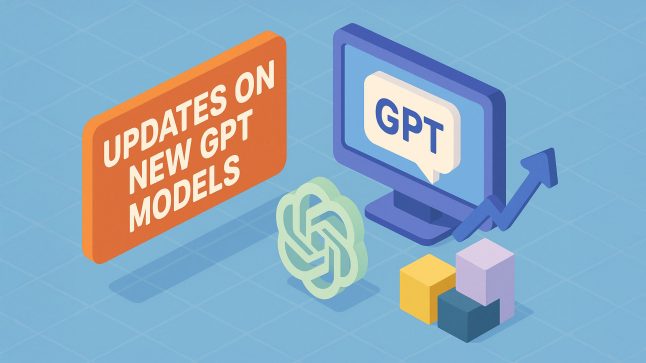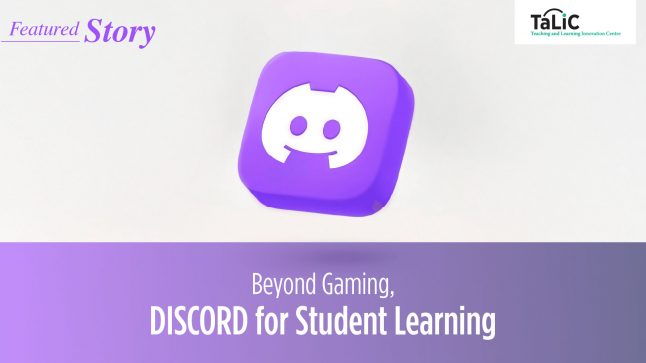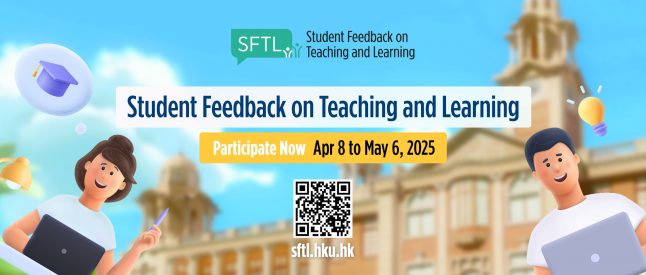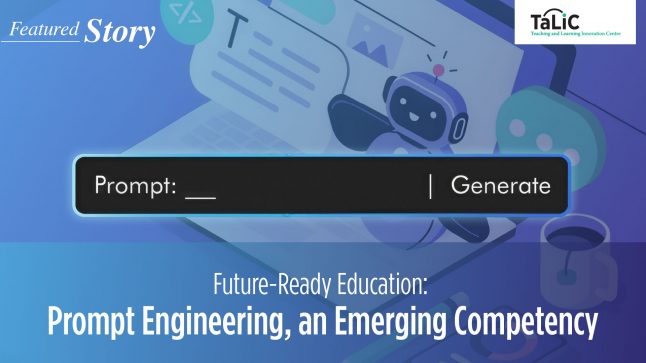
In our last post, we covered feedback practices designed by 3 teachers with the aim of enhancing students’ learning through feedback. This post will dive into the sharing of 6 other teachers.
Loop Learning Effectively
Dr. Charlene Ho combats the lack of feedback loop in her classes of 100-150 students by involving students in the process of providing feedback. For projects, she puts students into groups where they have to brainstorm ideas collectively, before going into a short consultation with herself on their ideas. Following that, each individual student produces their own draft of the project, which is then peer reviewed by other students according to the assessment rubrics. Having received comments from peers, the student reflects on their work, further revises the project and submits the final product. This entire feedback looping process takes place on Moodle.
History as Feedback
Professor David Pomfret integrates both formal and informal feedback in his history class. Based on in-class written responses to related questions by students, Professor Pomfret engages his students in historical scenario debates, where each student takes the role of a historical figure. As each student has the objective of winning the debate on behalf of their characters, they are motivated to read the course materials and prepare for class. Students’ debate performances are carefully observed and evaluated by teaching assistants, who walk around the classroom providing guidance and feedback. In addition, students from different groups or scenarios get to comment on each others’ strengths and weaknesses in debating. The debates are concluded by students voting for the best scenario debate, after which the teacher explains how the winning scenario deviates from the actual event that took place in history.
In order to deepen the feedback loop in the course and further engage his students, Professor Pomfret encourages his students to play a scenario based history video game, where students answer multiple choice questions and receive instant feedback on the choices made. Professor Pomfret plans to introduce a new function to the game where students get feedback on the pathways they choose.
 Professor David Pomfret was responding to questions raised by participants.
Professor David Pomfret was responding to questions raised by participants.
Time-saving Technique: Audio Feedback
Rethinking Feedback – Using Audio Feedforward to Help Students Improve Their Written Work
Ms. Tanya Kempston shares a sustainable and dialogic practice of providing students with short audio recorded feedback, that helps lighten the burden of writing or typing comments to hundreds of student works. Ms. Kempston feels an urgent need for feedback in higher education to evolve, as university class sizes have doubled and or even tripled. In order to cater for larger classes, she looks into the possibility of more efficient forms of feedback other than written. She resolves to audio using Voice Memos in conjunction with assessment rubrics, a more efficient way to provide audio feedforward. Annotations can accompany the audio commentary on the margins of a student’s work to avoid repetition. Voice Memos are concise and no longer than 3 minutes, so that students will not see listening to the audio commentary as a burden. Ms. Kempston emphasizes that audio feedback offers plenty of advantages such as time-efficiency, accountability and permanency. She also adds that students feel more connected with the teacher by listening to the audio feedback.
Using Audio Feedback and Whole Class Feedback to Help Students Develop Their Writing
Mr. Philip Smyth further elaborates on the efficiency brought by audio feedback which he also uses to tackle heavy workload of giving feedback. He calculates the time he saves with audio feedback in the picture below:
 [Image credit: Mr. Philip Smyth.]
[Image credit: Mr. Philip Smyth.]
He uses the audio commentary tool in Turnitin that allows a recording of 3-minute oral feedback along with short textual notes on each student’s assignment. On average, he managed to decrease the amount of time spent on a single assignment down to 10 minutes. In addition, Mr. Smyth also implements whole class feedback in his course, and he points out that the overall time he spent on giving whole class feedback and audio feedback is still less than writing individual feedback.
However, Mr. Smyth also acknowledges the disadvantages of audio feedback on Turnitin. For instance, if a student wants to go back to listen to a specific piece of advice or suggestion in the audio recording, he or she may have to take more time locating it in the track. Another issue is related to the fact that Turnitin currently does not keep audio comments permanently which makes it difficult for students to compare previous feedback with a new one affecting the learning progress.
Using Three Layers of Feedback to Increase Taught Postgraduates’ Engagement with Feedback
Using a theoretical framework on students’ engagement with feedback, Dr. Jessica To tries to explicate why students increase or decrease feedback engagement in the taught postgraduate course she teaches:

More often than not, part-time students in the course tend to avoid collecting their final assignments. However, even if they collect their marked assignments, they often struggle to interpret the feedback and the grade given. Taking into account the evening setup of face-to-face classes that leaves insufficient time to engage in dialogic feedback, Dr. To proposes a feedback strategy that requires students to provide audio-recorded self-evaluation for their own assignments via instant messaging apps, such as WhatsApp or WeChat, after being peer reviewed by 3 other students on Moodle. She also provides audio feedback to the student via instant messenger apps to comment on their accuracy of self-assessment, and give suggestions for improvement. As a result, students enhance learning agency in the “reversed” feedback process while allowing more time to reflect on peer and teacher feedback due to the asynchronous nature of the strategy. Furthermore, Dr. To emphasizes this practice helps develop students’ evaluative judgement, and enable them to transfer this ability to self-assessment work. On the other hand, this also stimulates students’ self reflection by obtaining constructive feedback from peers.
Practicing Feedback
Mr. Mathew Pryor uses feedback to a) review an assignment, b) as a way of affirming learning, c) to instruct or provide additional information, d) to comment or provocate and e) to develop higher order thinking. Mr. Pryor believes feedback should have a variety of forms and characteristics to enhance students’ understanding and learning, which he incorporates into his architectural studio classroom setup. In this classroom setting, instructing is interchangeable with giving feedback, as teaching assistants walk around observing and commenting on students’ works throughout the lesson. Sometimes students’ designs are reviewed by external professionals in order to gain as objective perspectives. Feedback is also provided outside the studio right at the architectural sites being studied. Moreover, students also get to learn from reviews by commenting on each others’ designs during gallery review sessions. All these elements of the feedback in Mr. Pryor’s class shapes it into a multi-directional communication.
 Mr. Mathew Pryor introduced feedback practice in his courses.
Mr. Mathew Pryor introduced feedback practice in his courses.
To sum up the symposium, Professor David Carless draws a special attention to two issues related to feedback practices in higher education: scalability and literacy. Feedback should be more work for students than teachers, and scalability issues faced by the presenters in the symposium should be effectively tackled. It is equally important to put forth the idea that improves the attitudes towards “seeking feedback, making sense of it, processing it and feeding into work”.
Follow #HKUFeedback on Twitter to check out more event details! Don’t hesitate to Contact us if you are interested in collaborating with us to enhance teaching and learning at the University!
Further Reading
- Crommelinck, Michiel & Anseel, Frederik (2013). “Understanding and encouraging feedback‐seeking behaviour: a literature review,” Medical Education, 47, pp. 232-241.
- McLean, A. (2015). “An anatomy of feedback: a phenomenographic investigation of undergraduate students’ conceptions of feedback,” Studies in Higher Education 40:5, pp. 921-932.
- Esterhazy, Rachelle (2018). “What matters for productive feedback? Disciplinary practices and their relational dynamics,” Assessment & Evaluation in Higher Education, 43:8, pp. 1302-1314.
- Ossenberg, C., Henderson, A. & Mitchell, M. (2018).“What attributes guide best practice for effective feedback? A scoping review,” Adv in Health Sci Educ, pp. 1-19.








